Purpose – The main aim of the study was to identify how girls' academic performance is affected by their involvement in household chores.
Methodology – This study was done by using random sampling technique for choosing participants of research that were given questionnaires both online and offline. Lately, some of participants were interviewed personally for more explicit research. Universities in Almaty were used as a population. Research was held by deductive approach and quantitative primary data collection.
Originality / value – The findings could be useful for girls at the universities to get used to perform multi tasks and see the possible benefits of it as proper time – management and acquiring useful
Findings – The results of the study showed that student girls with sufficient involvement in household activities have relatively higher academic performance.
Introduction
Research is addressed to explore how socio-economic level of family, time spent on household activities, family size and parent’s level of education are related to academic performance of girls.
Speaking of details, the study will seek to reach following objectives:
- To assess how socio – economic level of family is influential to girls’ academic performance;
- To determine the amount of time spent on chores and their type that have effect on girls’ academic fulfillment;
- To establish the influence of family size on academic performance of girls’ academic performance;
- To examine the impact of parents’ level of education on academic fulfillment of girls;
- To analyze how a combination of all parameters effect on girls’ academic
There are different views on the importance of student's involvement in housework. For example, according to Dr. Rossmann (cited in Wallace, 2015) who conducted a research on 84 students across four periods in their lives, identified that the earlier child begins chores, the better is his relationship with family, academic achievements and career success, as compared with those who didn’t actively participate in housework. However, as it was written in the article by Emmanuel (2015), the more chores are time consuming and physically demanding, the more it takes a student from performing academic activities. Consequently, there should be the equilibrium point, which will be identified in this research.
Theoretical background
According to Immanuel (2015), girls stand as the main performers of household activities. The reason for it is that their gender roles are already predefined. Specifically, they tend to spend about 4-5 hours per day on household work in comparison to 1-2 hours spent on studying. Several hours for studying are not enough for revising studied materials (Coltrane, 2000). Consequently, girls tend to fail their examinations and show poor academic performance.
According to Webbink (2012), in recent years, there is a significant increase in the number of working women in developing countries. As mothers are more involved into the market labor, they tend to shift some part of their household chores onto children as soon as they become able to perform them. In the majority of situations, girls are more likely to share housework with their mothers, rather than boys. Thus, the time girls spend on doing the housework rises accordingly with the time their mothers spend at work.
Psacharopoulos (2006), in his study, defined the main external and non-market benefits that can be brought by recipient of education. They included lower crime rate, increased life expectancy, consumption efficiency, social cohesion and child education. He claimed that more schooling of parents will have a positive effect on child's development of moral values and education process. In addition, this theory was approved by Okantey (2008) and Zuvekas (1997), who claimed that there is a strong correlation between parents' level of education and students' academic fulfillment.
Social classes also play a huge role in the attitude of child towards his balance between education and housework (Kunje, 2009). Number of researchers (Bornstein, 2003; Brooks-Gunn, 1997; McLoyd, 1998) examined children's educational processes, including academic accomplishment and stated that there is a strong connection with socioeconomic status. Sirin (2005) argues that despite the fact that continuous trend in the investigation of school execution proposes that family's socio-economic status (SES) is key in understanding academic success, it is important to predefine types of SES and have an accurate evaluation.
Alexander et al. (1997) stated that socio-economic status does not exactly reveal child's actual academic performance. There were cases of low-income families having high performance beliefs and taking respective actions, whose children were able to get scholar achievements. By contrast, children from high income families, who are constantly provided with all the necessary conditions, had a tendency to be not enough motivated and hence, performing worse. Consequently, creating appropriate education environment can also depend on the accurate expectations of parents regarding their children's performance.
However, even though there is a possibility of parents' attitudes playing more role than income level, in the most cases there is a positive correlation between SES and academic performance, thus, the theory by McLoyd stood as a base for this research paper.
Regarding other factors that have significant impact on performance, but which are not counted as home-based, and thus, not evaluated in this study, self-motivation seems to be the most indispensable. Selfdetermination theory (Deci and Ryan, 1991) can explain the extended interest in learning, and highly valuing the education mainly by internal motivation. Consequently, the study suggests that students who have greater personal responsibility and have fully defined their goals are able to perform pretty well, regardless of the external environment. However, Crandall (1995) noted that there still should be some frames, as in leastdeveloped countries external forces play the main role, even though students have a great desire and motivation.
Analysis
The data examined below presents some background information about interviewees, which includes parental education level, socio – economic level of the family, family size and time spent on performing household chores. These variables were taken due to their additional impact, along with personal motivation, on student’s academic performance. Questionnaires were distributed to sample of 119 girl students from various universities in Almaty. However, 2 respondents were not taken into consideration due to inappropriate and partial answers.
- Influence of the parental education level on the girl students’ academic
For the researcher it was considered important to find out correlation between parental level of education and GPA firstly in a sequence of possible alternatives.

Figure 1 – Respondents' parents' level of education
As we can see from the diagram above, overwhelming majority of answers about respondents’ parent’s level of education was bachelor degree.
From the graph, which is shown below it is noticeable that the range between bachelor and PhD degrees has positive effect on GPA, because in that span this index varies only from 3 and above. This means that general performance of a student is quite good. However, the same cannot be said about correlation between «without degree» parameter and GPA. The reason is that absence of degree negatively influence on GPA, which fluctuates only in scope of 2.
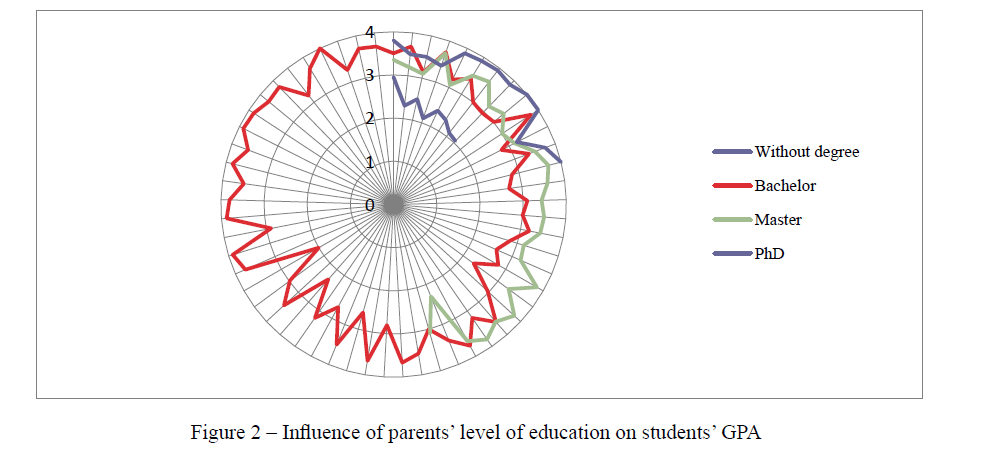
Figure 2 – Influence of parents’ level of education on students’ GPA
- Impact of family size on the female respondents’ academic performance
It was found appropriate to divide «family size» parameter into 3 categories: living alone or in dormitory, living in small families (2-4 members) and living in big families (more than 4 members). As it was illustrated in Figure 3, number of students that live in big families is the most considerable in comparison with others.

Figure 3 – Respondents’ family size
After conducting investigation based on respondents’ parent’s level of education, it was found significant to examine how family size could influence on GPA. Research showed that there is no stable interrelation between these indices. Student’s GPA does not directly depend on whether they live alone or in families with different number of members as it is presented in diagram below.

Figure 4 – Influence of family size on GPA
- Effect of the SES on girl interviewees’ academic performance
Regarding SES, most of respondents evaluate their family’s well-being as «medium» (46%) and «higher than medium» (35%) as it is illustrated in Figure 3.1. It might be due to the fact that we interviewed girl students only from the top universities in Almaty. It is assumed that such students come from families with good level of socio – economic wellbeing and are able to study in there both from educational and payment perspectives.
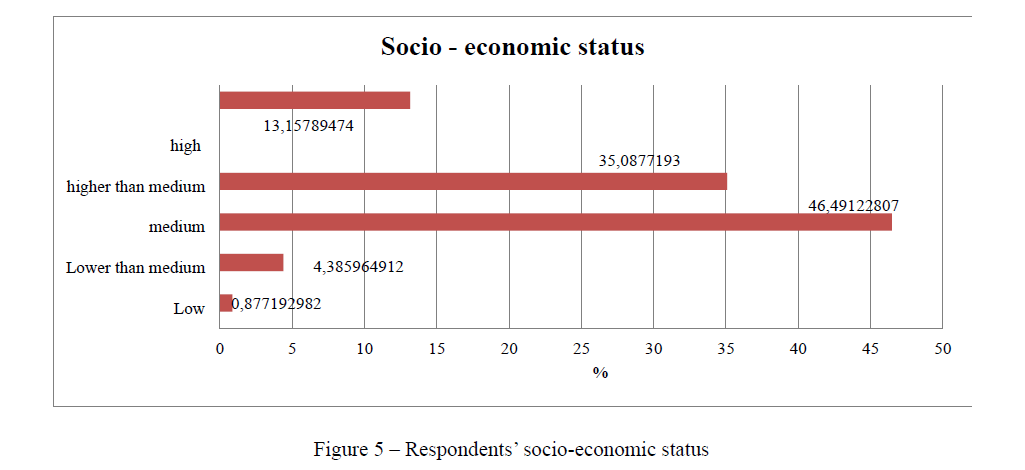
Figure 5 – Respondents’ socio-economic status
According to the following diagram, female students with indices «medium» and «higher than medium» tend to highly perform in their universities, while girl respondents with «low» and «lower than medium» indices have poorer academic performance. It is important to mention that index «high» showed unstable correlation with students GPA, which is in the range between 2 and 4.
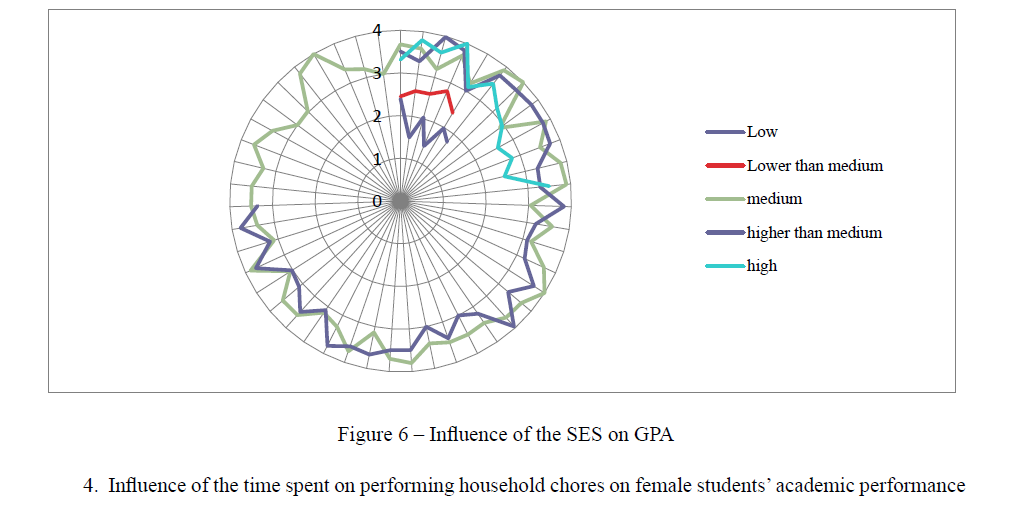
Figure 6 – Influence of the SES on GPA
- Influence of the time spent on performing household chores on female students’ academic performance
Figure 7 is used to present information about amount of time spent a day on performing household activities by every girl respondent. As we can notice from the diagram, usually girls spend 1-2 hours per day in order to implement housework (67%) and sometimes if they have too many household chores to do, they spend from 3 to 5 hours (23%).
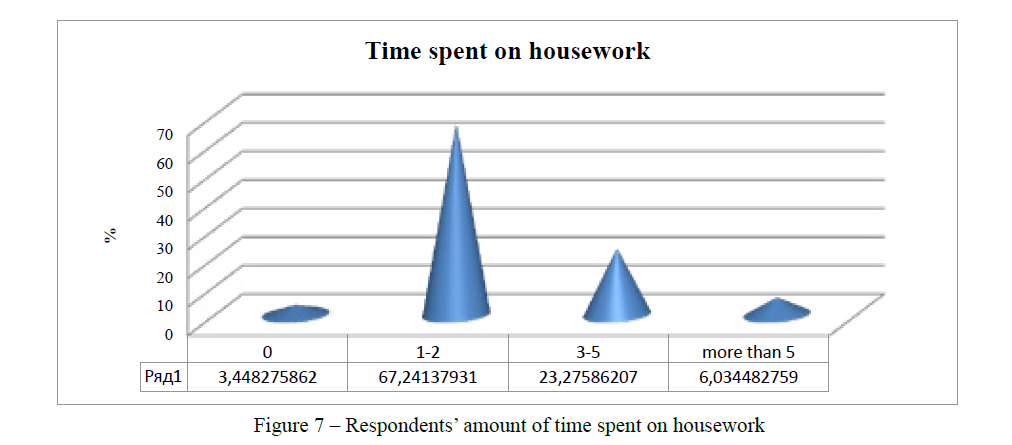
Figure 7 – Respondents’ amount of time spent on housework

Figure 8 – Influence of time spent on housework on GPA
The graphic above is considered in research as a representative of interrelation between hours spent on housework and girl students’ academic performance. It is noticeable that when girls spend no more than 1 or 2 hours on doing household chores, they tend to generally perform well. However, when they spend over 3 hours on doing household activities, their GPA gradually declines. It is interesting to mention that when girls do not implement any housework, they do not have good results in their studies either.
- It was found significant to analyze how a set of our indicators, namely girl students’ parents’ educational level (PEL), family size (FS), socio – economic status of a family (SES) and time spent on implementing household activities (TSH) influence on their academic performance, which is presented by In order to make an analysis we used multiple regression model, in which independent variables are PEL, FS, SES and TSH, and dependent variable – GPA.

As it can be seen from the regression analysis above, it was found out that FS is not statistically significant comparatively to other variables. Consequently, this parameter was not included into the forecast of the correlation line, while other variables have influence on GPA and hence are taken into account.
6. In-depth interviews.
In the process of conducting the research, we noticed that several girl respondents showed extremely good results in studies, whereas having a responsibility to implement all household activities by themselves. Therefore, it was found interesting to examine what specific factors encourage them to find time both for education and home chores. After a number of in-depth interviews, it was concluded that the main reasons of having an ability to have high academic performance and do housework as well is based on their balanced time-management skill and being well-organized in every day routine. Also, it worth saying a word about selfmotivation, because it appears to be the strongest factor for every individual. In addition, during the interviews girls several times pointed out their readiness to accomplish household chores while having plenty of projects, papers and home tasks to do because of their desires to help and support their parents. Consequently, there can be drawn a conclusion that those girls own a high value of both family and education.
Results
The research was aimed to find out how indices such parental education level, socio-economic level of the family, family size and time spent doing household activities affect student’s general academic performance in within the framework of university. The main objectives of the study were to analyze how all of these parameters influence on student’s GPA separately.
The investigation targeted universities with a sample of 117 female students. Along with online and offline questionnaires, in-depth interviews were made in order to more clearly understand a root of the problem. During conducting the research, we wanted to point out options, which were chosen by the majority of respondents and explore their relation to GPA. With the aim to examine only indicators of student’s good performance, we considered only GPA in the range of 3 and above. After the study was held, it was found out that about 67% of interviewees spend 1-2 hours a day on doing household activities and 72% of them have high GPA. Next, over 58% of respondents selected «bachelor» option to pick out their parent’s educational level. Inside this category 65% of students have GPA between 3 and 4. Talking about a choice between rather doing a home task, than performing housework, only 38% chose housework. However, from the perspective of actually having such trade – off and deciding what to choose can be an evidence that girls usually position house work and home task equally and then after taking into consideration their priorities decide what option to select.
Throughout the research it was investigated that student’s parental education level and their academic performances are strongly positively correlated. The reason is that parents with bachelor, master and PhD degrees possess a high level of understanding the importance of their children’s progress in learning due to their own experiences. Therefore, they are heavily involved in studying process by supporting their child and by not overloading them with housework more than needed. Consequently, students’ parents’ high level of education has positive impact on student’s GPA.
Second parameter, which is «family size» showed different influences on student’s GPA. It is explainable due to the fact that when girl student lives alone or in dormitory, all housework is on her shoulders and she does not share it with others, whereas when she lives in family, amount of housework is more, but there is a possibility to share the chores. Therefore, family size does not have straight effect on performance as other factors do.
Third parameter, which was considered in investigation, is socio-economic status of the whole family. As it was mentioned previously, female respondents that come from families with «medium» and «higher than medium» economic backgrounds usually perform well. It can be explained by the fact that high SES provide students with more opportunities to study without being distracted by any complementary tasks as household chores.
Last but not the least parameter is an actual time that every girl decides to spend on housework. Basically, it is one of the most crucial indicators, because it involves girl student’s abilities to allocate her time correctly in order to have time to both home task and housework. While conducting research, it was found out that there is a breaking point in time that determines everything. If girl spends less than 3 hours a day on implementing household activities, she is able to make her home task in time, revise studied materials and consequently have high academic performance. However, if she spends more than 3 hours on household chores, in contrast, she probably does not have enough time to study properly and thereafter shows poor results. Following this logic, it might be surprising to find out that girls, which spend almost no time on doing housework activities, have low GPA. It is explainable because of theory that claims «If girls both have time to do her home task and implement housework, she learns how to solve and cope with multi – tasks and this ability helps her outperform girls, which do not accomplish any chores» (Bianchi, 2000).
From the Figure 9, it can be clear that our predicted GPA varies from the actual one due to the lack of independent variables and possible not considered factors that are more significant than existing ones. As it was mentioned above, self – determination can stand as the major one. However, there is still a correlation between home – based factors and academic performance.
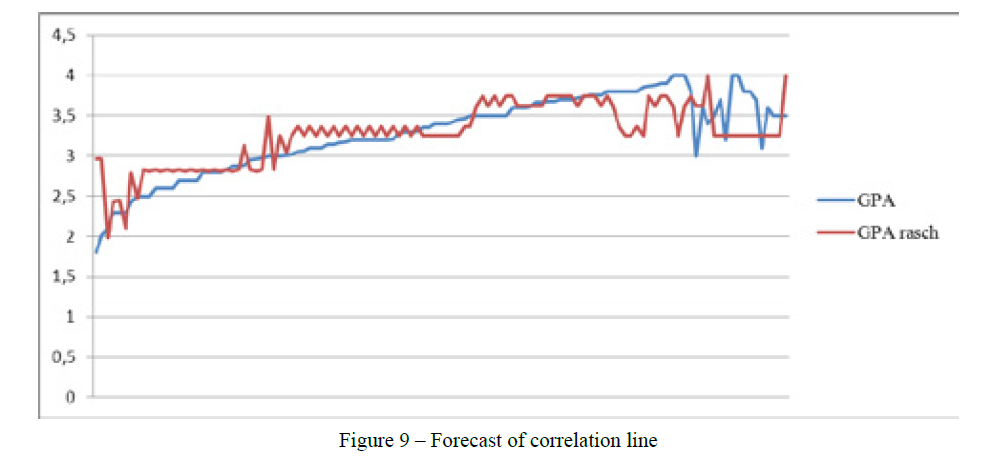
Figure 9 – Forecast of correlation line
Conclusion
Primarily, topic of research was chosen because of arising problem with a trade-off between home task and housework. Nowadays girl students usually sacrifice one of their responsibilities in sake of another. The main point we want to put emphasis on is that female students prefer to concentrate either on preparing for the lessons or doing household activities. However, results of investigation showed that the majority of respondents, who have high academic performance, tend to spend about couple of hours on housework every day. By combining these two activities, they learn how to manage their time properly and cope with several tasks at one time. Also, we believe that our paper could become a paradigm for young girls, because it contains examples of successful time-management skills. In addition, it teaches young generation to prioritize not only their self-motivation about education, but also some traditional values about family institute. We considered different indicators that may have influence on academic performance, but not all of them. It was concluded that indices, which were used in this research are only additional to some other that are prior.
References
- Psacharopoulos G. The Value of Investment in Education: Theory, Evidence, and Policy // Journal of Education Finance. – 2006. – № 32 (2). – pp. 113136
- Zuvekas S., Wolfe, Non-Market Effects of Education // International Journal of Education Research. – 1997. – № 27 (6). – pp. 491-502.
- Sirin S. Socioeconomic Status and Academic Achievement: A Meta-Analytic Review of Research // Review of Educational Research Fall. – 2005. – № 75 (3). – pp. 417-453
- Brooks-Gunn J. The effects of poverty on children // The future of children. – 1997. – № 7 (2). – pp. 55-71.
- Bornstein, M. Socio-econmic status, parenting, and child development. – Mahwah, NJ: Lawrence Erlbaum, 2003.
- McLoyd, Socioeconomic disadvantage and child development // American Psychologist. – 1998. –№ 53. – pp. 185-204.
- Alexander, K. , Entwisle, D. R., Bedinger, S. D. When expectations work:Race and socioeconomic differences in school performance // Social Psychology Quarterly. – 1994. – № 57. – pp. 283-299.
- Bianchi, M., Milkie, M. A., Sayer, L. C., Robinson, J. P. Is anyone doing the housework? Trends in the gender division of labor // Social Forces. – 2000. – № 79. – pp. 191-228.
- Webbink, , Smits, J., de Jong, E. Determinants of housework and family business work of children in developing countries // World Development. – 2012. – № 40 (3). – pp. 631-642.
- Deci, L., Vallerand, R. J., Pelletier, L. G., Ryan, R. M. Motivation and education: The self-determination perspective // Educational psychologist. – 1991. – № 26 (3-4). – pp. 325-346.
- Crandall, C., Katkovsky, W., Crandall, V. Children's beliefs in their control of reinforcements in intellectual academic achievement situations // Child Development. – 1995. – № 36. – pp. 91-109.
- Okantey, G. Facilitating Educational Attainment and Student Achievement – Science Bound Parents Program. – Purdue Extension-Marion County,
- Kunje, An Investigation of the Relationship between School and Pupil Characteristics and Achievement at the Basic Education Level in Malawi. – 2009.
- Coltrane, S. Research on household labor: Modelling and measuring the social embeddedness of routine family work // Journal of Marriage and – 2000. – № 62. – pp. 1208-1233.
- Emmanuel The influence of household chores on girls’ academic performance in secondary schools in morogoro rural district. – 2015.
- Rossman R. The misperception of chores: What’s really at stake? Paper prepared for the Whirlpool Corporation. – 2015.
- Official web-site of Ecommis [Electronic source]. – URL: http://www.ecommis.eu/downloads/related-documents/Bologna_glos_ ru.pdf (accessed: 16.09.2016)